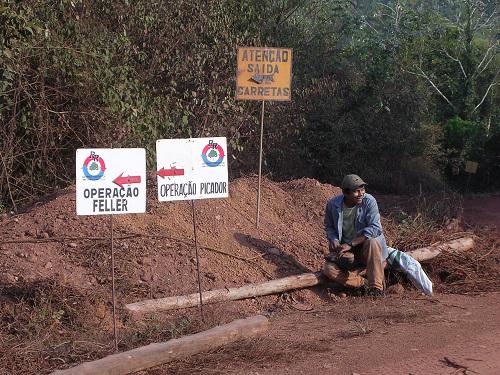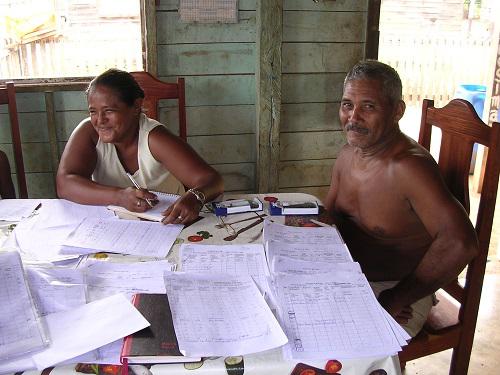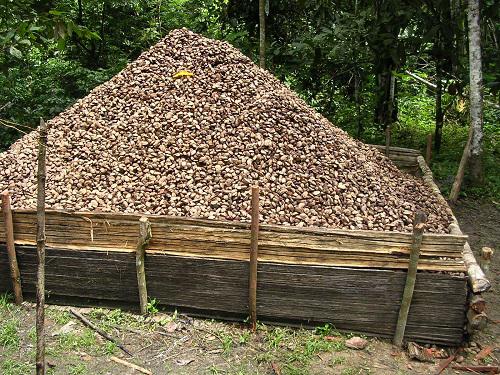Luke Parry
This project is a close collaboration between international, national and local partners.

Hunter in matrix.
The conservation issue:

Community assistants in game harvest study.
Secondary-growth forests now account for 40% of total forest area in the Brazilian Amazon, covering an area the size of France. Human population densities increase, yet the resilience of second-growth forests to hunting remains unknown. Recent research indicates that the game density in secondary forests can be high in the absence of hunting. Maintaining game densities in secondary forests is important for biodiversity conservation because second-growth covers an increasingly large area. Vertebrates are also crucial to the regeneration of secondary forests as they are exclusive dispersers of most plant species in the Neotropics. Over-hunting in secondary forests therefore has the potential to severely impair forest regeneration

Brazil nut mountain.
What we are going to do and how:
We are going to study hunting patterns by four forest communities within the Jarí region of the Brazilian Amazon. We combine ecology and social investigation to determine patterns and sustainability of hunting. Line-transects will surveyed monthly to assess wildlife densities in primary and secondary forests. In addition, we are working with local collaborators to visit houses nightly and record all instances of hunting. Monthly surveys are also conducted with local hunters, in which kill-locations are recorded using GPS, which will allow for in-depth GIS analysis of hunting patterns.
Partners and outcomes:
This project is a close collaboration between international, national and local partners. Scientists from the University of East Anglia in the UK are working closely with the Goeldi Museum in Belém, the Centre for International Forestry Research (CIFOR) as well as a large forestry company, Jarí Celulose, the owner of this huge 1.7 million hectare landholding. On the ground we are working with a local social foundation, and of course local people.
Our work will provide crucial information for the sustainable harvesting of wildlife by the 32 communities within the Jarí area. This project will be useful in establishing the sustainability of second-growth as a resource for both conservation and development, and therefore opens the door to a wider consideration on managing game harvest rates and partial-protection of regenerating forest. We believe that these first steps in assessing game off-take rates from second-growth forest will be of long-term significance to Amazonian conservation.